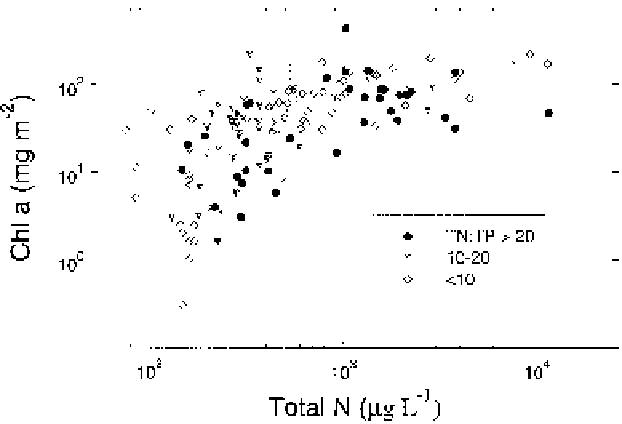Environmental Engineering Reference
In-Depth Information
control. Nonselective control agents can harm beneficial species and can be
extremely difficult to eradicate after they are introduced. Some problems as-
sociated with unwanted species introduction are described in Chapter 10.
A common biological control method is the introduction of the herbiv-
orous grass carp
(Ctenopharyngodon idella).
These fish are nonselective and
can remove a large amount of beneficial and unwanted aquatic vegetation.
The grass carp are used in several areas of the world as a source of protein.
A concern regarding grass carp is that they will escape the region where they
are introduced and remove desirable macrophytes elsewhere. Triploid grass
carp that are not capable of reproduction are available for use in control
programs. In addition, spawning requires a temperature of at least 17°C, so
reproduction is unlikely in some cool-temperate habitats (van der Zweerde,
1990). Use of grass carp is a relatively inexpensive control method.
MANAGING EUTROPHICATION IN STREAMS AND WETLANDS
The relationship in streams between benthic algal biomass and water
column nutrients is not as strong as that between nutrients and phyto-
plankton in lakes (Fig. 17.12). This lack of predictability occurs because
floods, grazing, and light limitation can lower algal biomass even when nu-
trients are high. Eutrophication in streams has become a serious issue, and
control of nutrients is likely to be the best solution to the problem (Dodds
et al.,
1997). Problems with eutrophication in streams include the negative
aesthetic impact of excessive algal growth, alteration of food webs, taste
and odor problems, low O
2
, high pH (Dodds and Welch, 2000), impedi-
ment to channel flows (Ferreira
et al.,
1999), and shifts in macrophyte
community structure (Bowden
et al.,
1994). In addition, there has been in-
creased concern about eutrophication in estuaries and near coastal marine
FIGURE 17.12
Relationship between total N concentration in the water column and mean
benthic chlorophyll from about 200 temperate streams coded by N:P ratios (W. Dodds,
K. Lohman, and V. Smith, unpublished data).


Search WWH ::

Custom Search